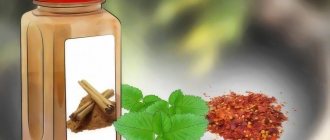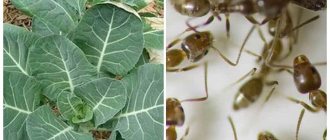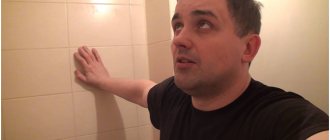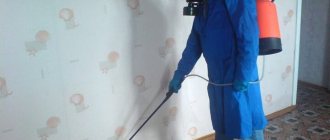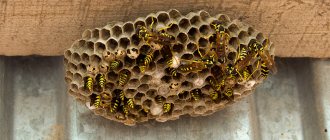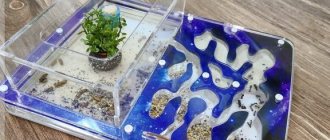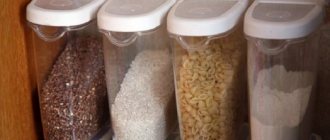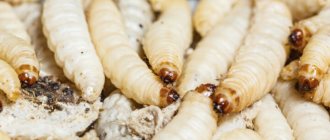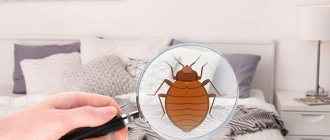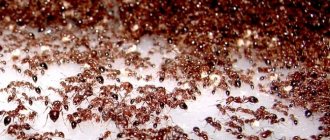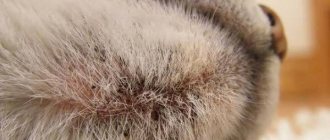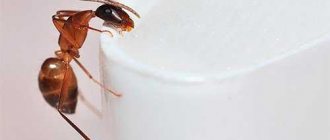Insects play an important role in human life. Some of them are beneficial, stimulating plant growth, while others can cause significant harm, damaging garden plants.
Therefore, the question of benefit or harm remains open to this day. One of the many types of insects that can often be found in a summer cottage are black ants.
A radical method of pest control is the use of pesticides that are sprayed on vegetation. Chemical reagents, the harmful components of which fall on the foliage and spread through the air, poisoning pests at home is dangerous, since household members and pets may suffer from this.
Therefore, to combat black ants, you need to select special means, or call exterminators for help.
How to fight
If at least one black ant is found at home, you can be sure that a whole colony will soon appear. Scouts are responsible for searching for food, and when they find it, they attract their fellows to the feeding site.
They, in turn, create living, swarming paths, delivering food to the anthill for feeding the offspring and the queen. Therefore, if you see one or more individuals in the kitchen (a place abounding in edibles), you need to take effective measures to destroy them.
There are several ways to deal with ants . You can use chemical reagents or try to apply folk advice. The main thing is to understand that before you get rid of black ants in the house, you need to thoroughly study possible control methods so as not to harm your health.
Household chemicals
Many types of chemical reagents have been invented that have a detrimental effect on household pests.
These include:
- gel-based insecticides: Global, Clean House, Great Warrior, Triple Strike, Rubit, Brownie, Fas, Raptor, Assault;
- insecticidal aerosols: Raptor “Destruction of crawling insects”; concentrated agent for spray Get, Kombat, Clean House;
- poisonous substances in the form of powders, pencils: Pyrethrum powder, Delicia, Muratsid, Mashenka chalk;
- toxic traps: Clean House, Trap, Taracid
When using household chemicals against black ants attacking your home, you should carefully read the methods of use and dosage.
If you use drugs incorrectly, you can cause serious harm to your health.
Folk remedies
Before getting rid of black ants in an apartment, you need to carefully analyze the available folk methods so as not to harm yourself, loved ones, or pets.
The most common methods of struggle:
- in a saucer with sweet contents (jam, jam, honey), add 1 teaspoon of boric acid, 2 teaspoons of yeast, place in places where insects accumulate;
- to disorient scouts, once a week you can treat ant paths with garlic juice, black pepper extract, coffee grounds, citrus fruits;
- Pour cleaning products into a container with a spray bottle and periodically spray on the floor, window sills, and countertops;
- in a country house, it is recommended to periodically treat the interior surfaces of the premises with kerosene;
- To eliminate pests, the baseboards, corners, and cracks are sealed with double-sided tape.
In addition, specialized stores sell various ultrasonic traps that are placed around the house to repel insects.
Chemicals
Manufacturers of household chemicals offer a wide range of products for exterminating small pests. These include aerosols, gels, pencils, syringes, powders, and traps.
How to use the drug is indicated in the instructions from the manufacturer. For example, the spray is sprayed in places where insects often appear, along the paths of their movement, and on the nest itself. The gel can be applied to cardboard and left where the ants were found. Lines are drawn with chalk near the ventilation holes, favorite places - under the sink, near the trash can, along the path of insects. The powdery substance is dissolved in water, and then baseboards, cracks, and walls are sprayed with this liquid.
Types of insects
There are more than 8,000 species of black ants. Their population is constantly growing, forming new varieties, with some changes in color, behavioral characteristics, and preferred habitats.
Commonly encountered species include:
- black garden ants. They build anthills on the soil, feed on rotten wood, rotten fruit, and fallen leaves;
- Camponotus (carpenter ants) are characterized by a bright red or black-red color, up to 1.2 cm long. Protecting themselves from the enemy, they emit a specific smell. They feed on insects, carrion, and sweet rotten fruits;
- small black ants up to 3 mm in size that live in houses emit an odorous liquid when they are crushed. From food they prefer sweets, honeydew, weak dying insects;
- turf insects are black-brown or black in color. They feed on sweets, fatty foods, and insects. Active at night. They live under tree roots, paving slabs, in turf, and fight among themselves in colonies;
- fast or crazy populations are characterized by chaotic, erratic movements, often going off the route. They are yellow or black in color.
Large black ants can live both in garden plots and sneak into apartments, causing harm to humans.
Recommendations
To stop the appearance of insects in a private wooden house, you should paint the foundation with creosote. It is worth inspecting the house for weak points that give ants unhindered access inside. It is necessary to seal holes and cracks in the foundation, walls and windows, as well as openings around incoming services. The sealed areas on the walls and foundation must be coated with kerosene, and on the windows - washed with soapy water with the addition of any fragrant essential oil to remove the odor through which insects find their way.
By using various control methods and further observing preventive measures, you can eliminate black ants forever.
How they penetrate houses and plots
Black ants use many ways to enter apartments and gardens:
- in search of food and warmth, adult individuals crawl into basements, into attics, and enter rooms through ventilation holes;
- if one of the neighbors poisons black ants in their apartment, they find tiny loopholes to move to a safe place;
- in the warm season, individuals with wings can enter the house through an open window;
- If there are constantly crumbs and other food remains on the floor in the kitchen, this attracts insects; they crawl through narrow cracks in the walls, under the baseboards.
In addition, ants in an apartment can be brought from the street on the fur of pets after a walk.
Lifestyle Features
The black ant belongs to the family of ants. Domestic ants, like wild ones, live in colonies in which a strict hierarchy is maintained. The main thing is the uterus, on which prosperity and population growth depend. The largest group consists of working ants.
Their responsibilities include construction, obtaining food, caring for offspring, and maintaining the queen. Soldier ants have more massive mandibles, used for attack and defense.
Males and females are larger than workers and grow wings during mating season. Males are killed after mating, and fertilized females fly away to create a new colony. At the initial stage of building an anthill, there may be several females in order to quickly increase the number of workers. But as the colony grows, only one queen remains. In adult ants, plant foods predominate in their diet, while small ones prefer a protein diet, but both of them have a sweet tooth.
Damage caused
Despite the fact that insects benefit humans by eating carrion, fallen rotten fruits,
they can cause serious harm to gardening:
- they leave behind aphids, sucking the juice of the young foliage of plants;
- arranging anthills on lawns spoils the aesthetic appearance;
- eat the roots of trees, other green spaces, foliage, sweet vegetables, berries, root crops;
- spread harmful bacteria throughout the garden plot, infecting plants.
Black ants living in houses are also harmful:
- carrying the remains of household waste and technical waste, they bring dangerous bacteria into the apartment;
- damage food products;
- They carry leftover food around the rooms, creating favorable conditions for the development of fungus and mold.
If even one individual of an insect of this species is detected, measures aimed at destruction should be immediately taken.
Why can they start?
There can be many reasons why pests appear in your home. But the main one is unsanitary conditions, which will have to be dealt with first. Examine the premises, objectively assessing their level of cleanliness. Risk factors include:
- uncollected food remains;
- no lid on the trash can;
- open sugar bowls;
- freely available sweets;
- unsealed packaging of bakery products;
- always available bowl of animal food.
In a home where there are small children, people with weak immune systems, people with allergies, asthmatics, the elderly and the elderly, deteriorating sanitary conditions can become a source of increased danger. And if uninvited guests first visit a trash can or sewer, it is likely that they will bring with them millions of dangerous bacteria, helminthic infestations and a host of other not-so-pleasant companions. Is it worth risking the well-being of your home if you can protect yourself by taking timely care to eliminate pests?
When is it time to call an exterminator?
If black ants are found in small numbers, you can try to deal with them yourself, using chemicals or traditional methods. However, it is not always possible to cope with pests on your own, especially in a neglected situation when insects begin to build anthills right in your home. In this case, you will have to resort to the help of specialists
Having in their arsenal special equipment and effective chemical reagents that cannot be purchased in a store, exterminators carefully treat every corner of the apartment, resulting in the instant death of pests. It usually takes some time to process the premises.
Therefore, specialists carry out the treatment only after the owners leave the apartment for several days. This is important, since potent poisons destroy not only large insects, but also have a detrimental effect on the health of humans and animals. Processing is carried out in special suits and protective masks.
If black ants are found in an apartment building, the best solution would be to unite the neighbors of the nearest apartments to carry out the disinfestation procedure. This significantly reduces the risk of adults spreading to large areas.
To prevent the reappearance of pests, the premises are re-treated after a few days.
Traditional methods
Most often, these methods are no worse in effectiveness, but are safer for the health of people and pets.
Repelling with an unpleasant odor
There are a number of herbs and foods that small black insects simply cannot tolerate. But this option is only suitable as a temporary one: it will only scare away the ants, but there will still be a possibility of them returning.
What you need to do: place dried chamomile flowers around the apartment. You can also use anise, cloves, peppermint, sunflower oil, pepper, garlic.
Sweet trap
Pour water into a deep container, add 2 tbsp. lie honey or jam. Place the jar where ants are common. Insects will crawl inside to feed, but will not be able to get out.
Using products that are not digestible in the stomach of insects
Ants love the smell and taste of cornmeal, but their digestive systems cannot handle it. Sprinkle flour along travel paths.
Starch and coffee grounds will have the same effect.
Use of a poisonous substance
Borax or boric acid is harmful to ants. Mix this powder with a small amount of water, add honey or jam. Place the resulting mixture on saucers and place it in the corners of the house, on ant paths. The ant will taste the treat itself, and will also definitely take some of the treat to the colony. This will cause infection of most of the anthill. Another advantage of this method is that the poison does not begin to act immediately, but after 2 hours, i.e. the individual will have time to return to the anthill.
Foundation treatment
If ants have attacked a private house, then try this option: coat the foundation of the house outside with creosote. This will prevent insects from entering the home.
Processing stages
You need to understand that the female and the laid larvae are located in the very depths of the anthill. If working individuals sense danger, they try to move them even further.
Therefore, eliminating even the majority of the representatives of the colony will not help solve the problem, because after a short time the queen will continue to produce new ants.
Before processing, the following measures must be taken:
- Move furniture away from the walls.
- Carry out wet cleaning of the entire premises.
- Remove vegetation from the apartment, hide food and groceries in a specially designated place.
- Eliminate the presence of children and pets in the house. It is ideal if the room is “bare” so that it is possible to get to every corner, thereby getting closer to the uterus and larvae.
The processing process is carried out in the following sequence:
- Searching for places where arthropods accumulate, identifying nests by following trails.
- Spraying an insecticidal substance in the suspected habitats of ants and their travel paths.
- Prevention. It should be noted that after treatment, some of the ants located farthest away will begin to search for a way to survive - they will begin to move through ventilation systems, cracks, holes in the camp, and the floor.
Preventive measures
Prevention of ants
How pests get into the house is already clear. But what needs to be done to drive away the ants - first of all, you should take care of the prevention of this unpleasant phenomenon, namely:
- do not leave dirty dishes after eating, immediately wash and wipe the plates and cutlery dry;
- do wet cleaning in the kitchen every day;
- wipe all kitchen surfaces and sinks with a vinegar solution;
- Wash all bottles and cans thoroughly after use;
- seal food hermetically;
- remove all products that have a strong sweetish odor.
By following these rules, you can try to escape from an insect invasion. Keeping your home clean and tidy is always easier than getting rid of uninvited guests. The lack of comfortable living conditions will force them to leave, but if these measures are not enough, then more serious protection will be required.
Capture
Let's say you're lucky and you see a queen crawling on the ground. If she has not shed her wings yet, it is better to leave her alone, she may not be fertilized yet. We only need queens that have already shed their wings - they will definitely be somewhere nearby. If you see one, then you can put it in the incubator.
Never grab the uterus with your hands! You can easily damage its legs or abdomen. She needs to be driven into the incubator, you can use improvised objects - adjust and guide the queen with a blade of grass, or a thin twig, or a piece of paper. The main thing is not to damage! If you don’t have an incubator with you, you can use another container to bring the queen home, but you don’t need to drag it, but move her to the incubator as quickly as possible. After that, try to identify the species. If it is a social parasite, release it; if the queen establishes a colony on her own, remove the incubator to a dark, quiet place and do not disturb it. Check back carefully in a couple of days - most likely she will already have a clutch of eggs. Now all that remains is to wait - it is advisable not to touch the queen at all for several weeks, every time you look in may result in the brood being eaten, and you will have to wait from the beginning.
Uterus Serviformica cunicilaria in vitro
The largest ants in the world
Camponotus gigas. This type of ant is considered one of the largest. Working insects reach 22 mm, heavy and powerful soldier ants grow up to 28 mm, and the largest queen ant of this species reaches 31-33 mm. Such insects live in Asian countries and are found in Thailand, Indonesia, and Malaysia. Camponotus gigas is easy to recognize by its characteristic color: the body of the insect is black, the legs are yellow, and the back of the body is red-brown.
Ant Camponotus gigas
One family includes up to 8,000 members; the family’s underground kingdom of chambers, passages and tunnels occupies up to a hectare of land. The insects' diet includes seeds, fruits, carrion and bird excrement. Ants hunt in groups of 10 individuals at night, and train their young during the day. Ants of this type aggressively guard the territory. When confronted with another family, it is a battle to the bitter end - the losers leave to look for another place to live.
Myrmiki lifestyle
However, the insects themselves are capable of an aggressive attack only if their anthill in the forest is damaged. Myrmikas build nests on the ground, under pebbles and in tree stumps and moss hummocks. Their families number from 10 to 12 thousand individuals. At the same time, there can be up to one hundred egg-laying females. Members of one family live in several nests, which are connected to each other not only by ground paths, but also by underground passages. Some of these “houses” are permanent, they are inhabited all year round. Other buildings are seasonal; insects use them only in the summer. Before wintering, all members of the huge family move to large permanent nests.
Small ants use their summer quarters to raise numerous larvae, pupae and root aphids.
Myrmics hunt small invertebrates, eat flower nectar, and grow colonies of aphids on plant roots. Scout ants search for food. Having found food, they leave scent trails, then return to the anthill for help and correctly lead out their fellows according to their own marks.
